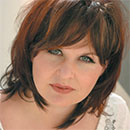Entertainment
/ArcaMax

Kris Jenner hails her 'class act' plastic surgeon
Kris Jenner has hailed her cosmetic surgeon as a "class act".
The 69-year-old reality star heaped praise on Dr. Garth Fisher after Kylie Jenner, Kris' daughter, recently revealed that the Los Angeles-based surgeon was responsible for her breast enlargement.
After Kylie praised Dr Fisher's work, the surgeon wrote on Instagram: "I'm honored to ...Read more

Brittany Cartwright worried Jax Taylor might 'spy' on her
Brittany Cartwright feared Jax Taylor would "spy" on her following their separation.
The 36-year-old reality star filed for a divorce from Jax in August 2024, and Brittany remained in their family home following their break-up.
Brittany - who has Cruz, four, with Jax - said on 'The Valley': "Now that Jax is moving into the condo, which I'm ...Read more

Music legend hit with flu and ordered to rest by doctor weeks ahead of Glastonbury set
Sir Rod Stewart has been "ordered" to "rest" after being struck with the flu ahead of his Glastonbury set.
The 80-year-old music legend caused concern after he was placed on vocal rest amid his 'One Last Time Tour'. He was then forced to postpone his Las Vegas residency show at The Colosseum at Caesars Palace on Sunday (01.06.25) "due to ...Read more

Walton Goggins and Aimee Lou Wood finally address 'ridiculous' reports of White Lotus feud
Walton Goggins has confirmed there is "no feud" with Aimee Lou Wood after 'The White Lotus'.
The 53-year-old actor and his co-star - who played Rick Hatchett and Chelsea on the hit HBO show - have faced claims of a rift between them after he unfollowed her on Instagram once season three of Mike White's anthology drama was finished.
In a joint ...Read more

Halle Bailey's ex DDG claims she is a 'psychological risk' to their baby son
DDG has asked the court to stop Halle Bailey from travelling internationally with their son.
The 27-year-old streamer has filed a motion requesting an emergency hearing to restrict the 'Little Mermaid' star from taking their 17-month-old boy Halo to Italy for work.
In court documents obtained by PEOPLE magazine and other outlets, he accused ...Read more

Leah Remini supported Jennifer Lopez amid divorce
Leah Remini and Jennifer Lopez "text each other loving messages of support" amid their divorces.
The 54-year-old actress has revealed that she helped Jennifer - who finalized her divorce from Ben Affleck earlier this year - to overcome her own heartbreak.
Leah - who was married to actor Angelo Pagan between 2003 and 2024 - told Us Weekly: "...Read more

Kristin Cavallari: Divorce can be a really good thing
Kristin Cavallari thinks divorce "can be a really good thing".
The 38-year-old star insists she doesn't have any regrets about her divorce from former NFL star Jay Cutler.
The blonde beauty - who has Camden, 12, Jaxon, 11, and Saylor, nine, with Jay - said on the first episode of 'Honestly Cavallari: The Podcast Tour': "I do not believe in ...Read more

Ana De Armas loves her Ballerina character
Ana De Armas has loved becoming part of the 'John Wick' franchise.
The 37-year-old actress plays Eve Macarro, a ballerina who trains as an assassin, in 'Ballerina', the new 'John Wick' spin-off film, and Ana has relished becoming part of the action franchise.
She told The Hollywood Reporter: "I love the character and I think we can go anywhere...Read more

Octavia Spencer is returning for Ma 2
'Ma 2' is in development with Octavia Spencer returning to the title role.
The 55-year-old actress has been announced for the upcoming sequel, which will see her reprise her role as the eponymous killer from the original 2019 thriller.
Blumhouse Productions founder and CEO Jason Blum has confirmed plans for the follow-up, and heaped praise on ...Read more

Songwriting has changed, says Barry Manilow
Barry Manilow thinks "songwriting has changed".
The 81-year-old star released his eponymous debut album back in 1973, but he admits that songwriting has changed dramatically during the course of his career.
Speaking to Billboard, he explained: "The songwriting has changed.
"Young people don't write the way I was trained to write. There's no ...Read more

'I never stop writing!' John Lydon confirms new Public Image Ltd album is on the way
John Lydon is "constantly writing" for a new Public Image Ltd album.
The 69-year-old music legend - who founded PiL in 1978 and has released 11 albums to date with the post-punk band - has promised new music is on the way, and he'll still be working on the material whilst on tour with the group this summer.
Asked if a new LP is on the way, he ...Read more

Leah Remini claims Church of Scientology wanted to murder her
Leah Remini claims the Church of Scientology wanted to murder her.
The 'King of Queens' actress, 54, joined the group aged 13 when her mother became a member, and described the organisation's control over every aspect of her life in a candid new interview about the impact it has had on her and her family's lives.
She spoke to UsWeekly about ...Read more

Patrick Schwarzenegger bombarded with cash from fans while they watched him on 'White Lotus'
Patrick Schwarzenegger was bombarded with money from fans while they watched him on 'White Lotus'.
The 31-year-old actor made the revelation during an interview with People, where he sat down with his former co-star on the show, Aimee Lou Wood, to promote their new partnership with Venmo, ahead of the launch of the brand's debit card and ...Read more

Sean 'Diddy' Combs accused by reporter of drugging and raping her during European tour
Sean 'Diddy' Combs has been accused by a reporter of drugging and raping her during his European tour in 2000.
The rapper, 55, is still sitting trial in New York on federal charges including racketeering and sex trafficking, and away from the court proceedings Kathi Steininger, a 44-year-old Austrian journalist, publicly accused him of the ...Read more

A-ha frontman Morten Harket reveals Parkinson's diagnosis
A-ha frontman Morten Harket has been diagnosed with Parkinson’s disease, he revealed in an article published on the band’s website Wednesday.
The “Take On Me” singer told biographer Jan Omdahl that he underwent a procedure for deep brain stimulation (DBS) in June 2024, addressing the left side of his brain, and a similar one in December...Read more

Review: 'John Wick' spinoff 'Ballerina' twirls beautifully but aimlessly
There’s a moment in “John Wick: Chapter 3 - Parabellum” where our aggrieved assassin goes to visit his adoptive mother figure, The Director (Angelica Huston) at the Tarkovsky Theater, where she commands the training of ballerinas and the assassins of the Ruska Roma tribe, of which John Wick was once a member. He pleads for the Director’s...Read more

'Ballerina' review: Ana de Armas leads a bloody 'John Wick' spinoff
The new “John Wick” spinoff “Ballerina” is recommendable, -ish, primarily for the way Anjelica Huston, as the Russian mob boss, makes a meal out of a single-syllable word near the end, delivered after a pause so unerringly timed it’s almost too good for this world. We don’t deserve it. This fifth and fairly diverting movie in the ...Read more

Will Ferrell confirms he will return to Broadway with stage musical adaptation of his 2020 Eurovision movie
Will Ferrell has confirmed he will return to Broadway with a stage musical adaptation of his 2020 film 'Eurovision Song Contest: The Story of Fire Saga'.
The 56-year-old actor and comedian, best known for his roles in 'Elf' and 'Anchorman', is co-writing the Broadway script for the musical with Harper Steele and Anthony King.
Will was quoted ...Read more

Taylor Swift 'working to trust' Blake Lively after Justin Baldoni subpoena
NEW YORK — Sources are shedding light on the state of Taylor Swift’s fractured decade-long friendship with Blake Lively after the pop star was dragged into the actress’ messy legal battle with Justin Baldoni.
Swift was subpoenaed in May to serve as a witness in the case, with Baldoni’s legal team saying she potentially had information ...Read more

Jessie J has early breast cancer, will have surgery soon
LOS ANGELES — Singer Jessie J has breast cancer. Early breast cancer, mind you, and she’s taking care of it as soon as possible.
“I’m highlighting the word ‘early,’” she said Tuesday via video on Instagram. “Cancer sucks in any form, but I’m holding on the word early.’”
The “Bang Bang” artist also joked that it was �...Read more
Inside Entertainment News
Popular Stories
- Q&A: How 'Will Trent' star Ramón Rodriguez became an industry game-changer
- Karate Kid: Legends star Jackie Chan learnt English through country music
- Phasmophobia is getting a horror movie adaptation from Blumhouse
- Review: In 'Stick' Owen Wilson charms in this golf comedy about grief and growing up
- Star Wars star Carrie Fisher urged Mark Hamill to 'embrace' life as Luke Skywalker











